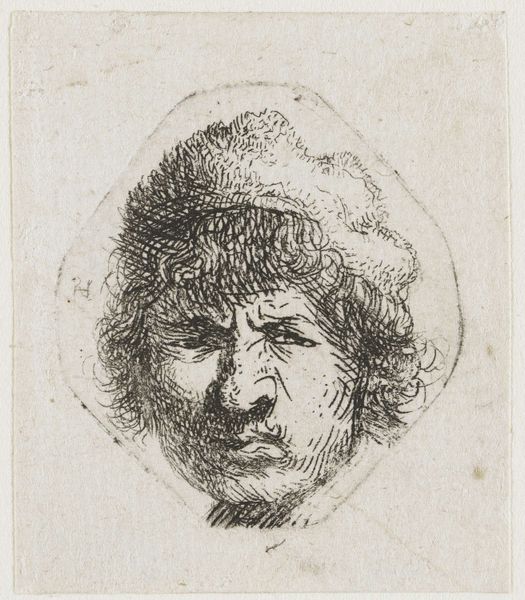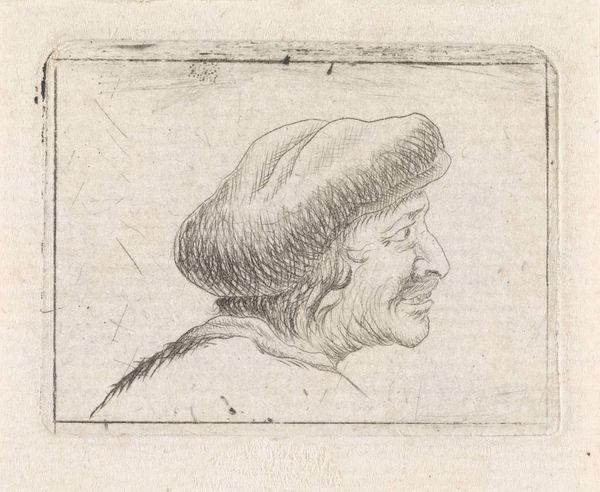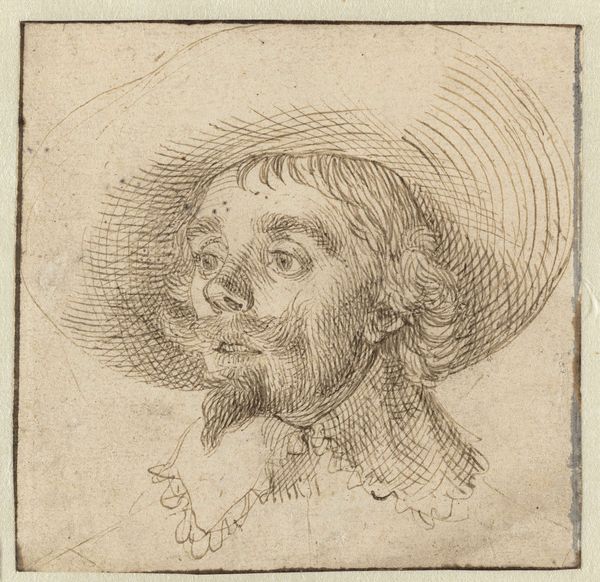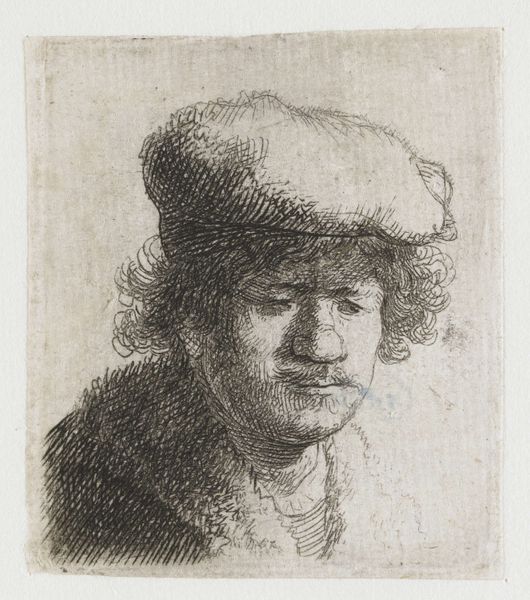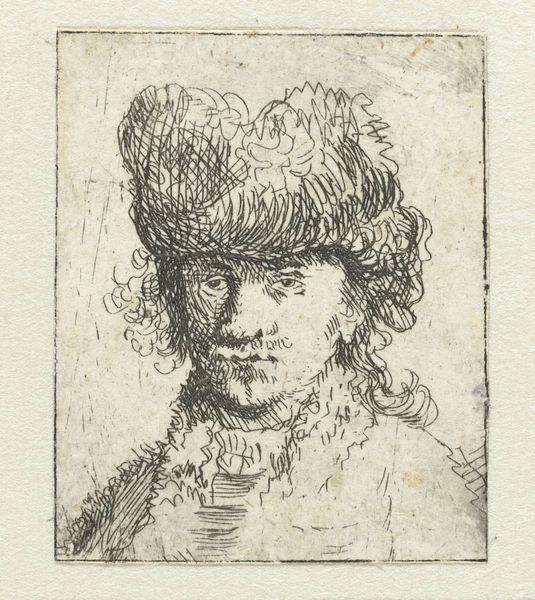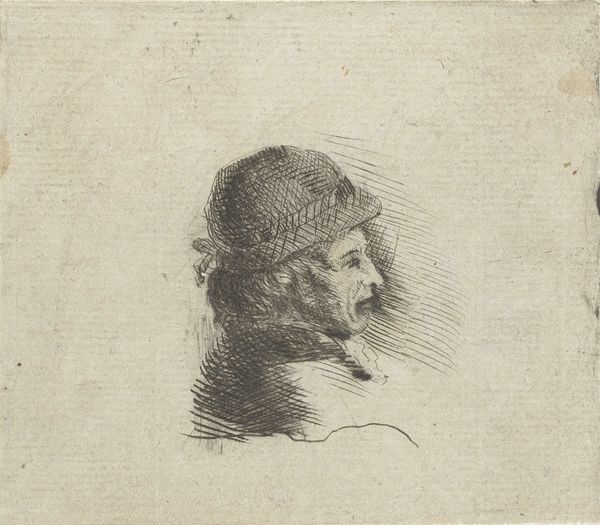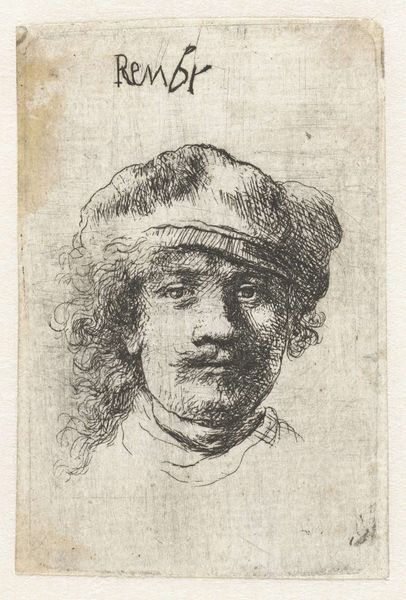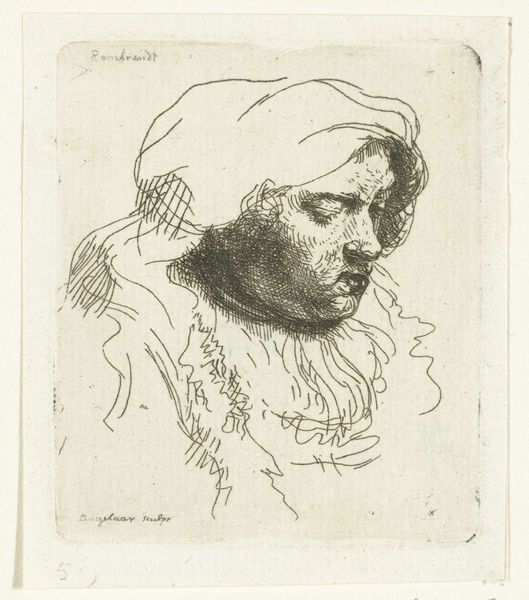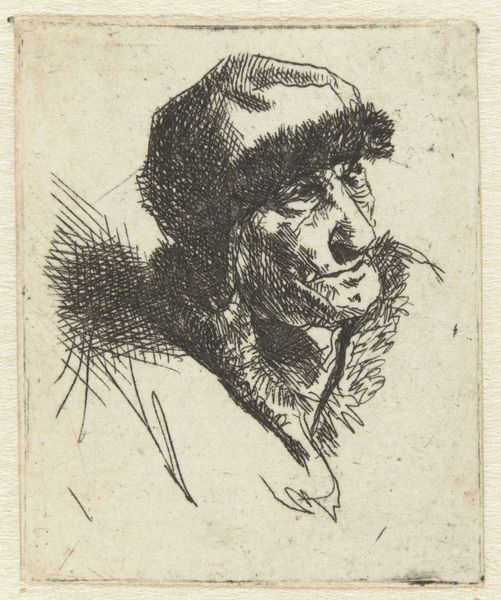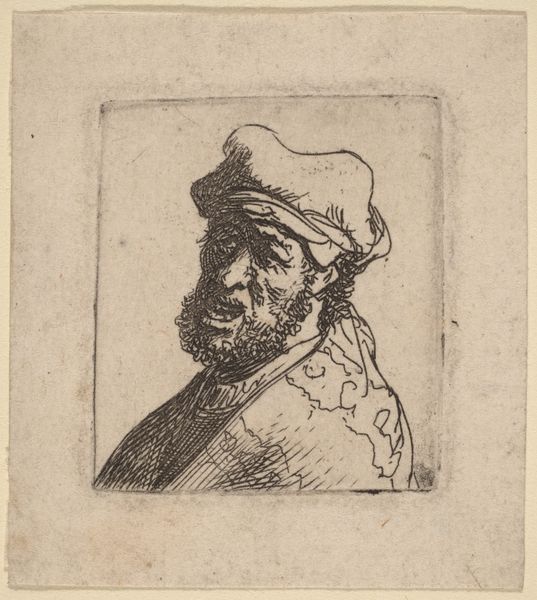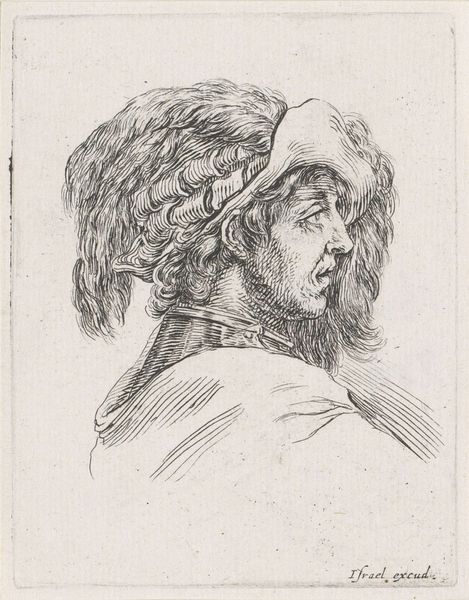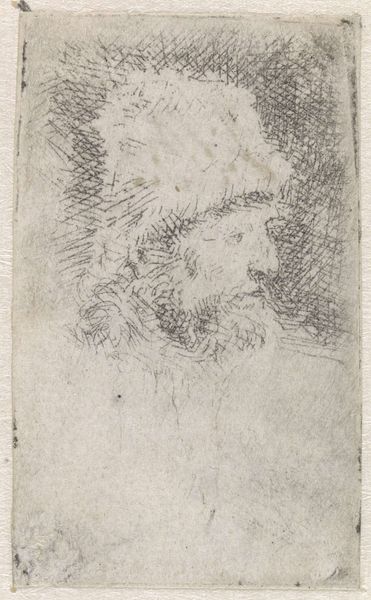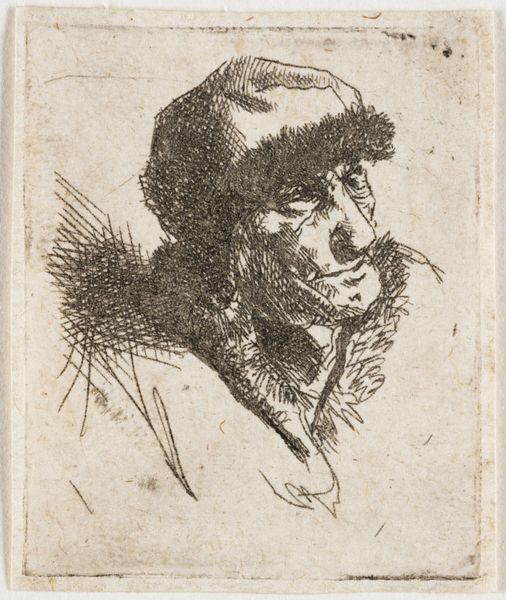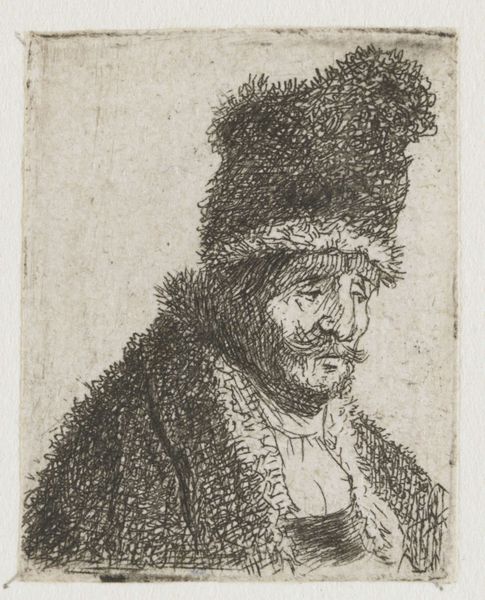
drawing, pencil
#
portrait
#
drawing
#
pencil drawing
#
pencil
#
realism
Dimensions: height 67 mm, width 64 mm
Copyright: Rijks Museum: Open Domain
Curator: Here at the Rijksmuseum, we have a striking pencil drawing by Hendrik Kobell, "Mannenkop met bontmuts," dating from 1761 to 1779. Editor: My initial impression is one of austerity. The subject’s expression and the stark lines convey a sense of hard-won wisdom or perhaps resignation. Curator: Exactly. The technical skill lies in Kobell’s rendering of texture with minimal strokes. The hatching technique particularly excels in creating the furry mass of the hat, lending it a tangible volume that contrasts the finer, more delicate lines describing the face. Editor: I find it impossible to separate this portrait from the social circumstances of its creation. The hat is undoubtedly a signifier of class. Does it suggest an association with the fur trade? Or perhaps a deliberate signifier of affiliation with a particular social class or identity group? Curator: From a purely formal standpoint, consider how the tonality shapes our experience of the image. The light reflects off the paper and illuminates the planes of the face. Observe how the subtle gradations sculpt the face into a tangible form with just the soft graphite. Editor: But it is more than mere “form," wouldn't you agree? Look at the lines around the eyes. This is a man who’s lived—maybe even suffered. And think about who got memorialized in art during this era. This wasn't simply documentation; it was elevation, a statement about who and what society deemed worthy of representation. Was Kobell celebrating him? Or capturing something more ambivalent? Curator: Perhaps both? We are left with a visual artifact that showcases artistic prowess. The precise layering of lines and detailed work on display provides insight into the conventions of portraiture from this period, speaking volumes about the stylistic practices used at the time. Editor: Precisely, the interplay of style and lived experiences is what makes "Mannenkop met bontmuts" so arresting. It speaks volumes of both the individual captured and the broader cultural framework that defined the parameters of 18th-century Dutch society.
Comments
No comments
Be the first to comment and join the conversation on the ultimate creative platform.
